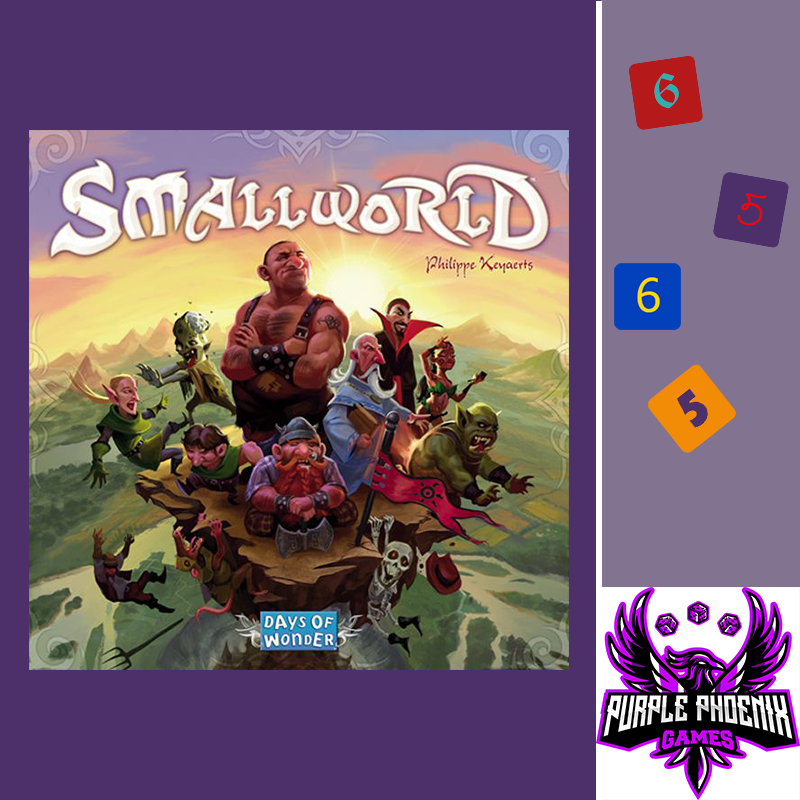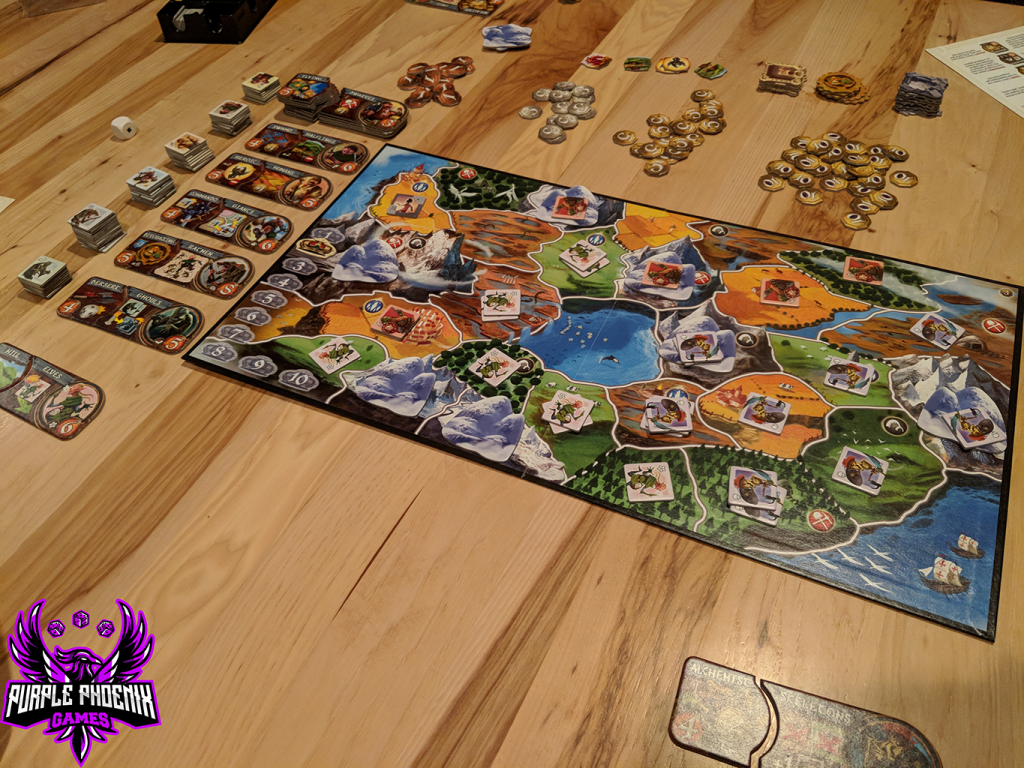
A neat thing about this hobby is getting in on all the hype of a soon-to-be-produced game. It’s exciting to follow the development, and neat to get sneak peeks and inside access to the production. But another awesome thing about this hobby is getting to discover a game long after it’s release, and still finding yourself excited about it. That’s what happened with me and Small World. That game is 10 years old at this point in time, but I was only introduced to it within the last year. I thoroughly enjoyed it, so when I saw it at a used game sale, I knew I had to have it.
| Small World (2009) | Days of Wonder |
| 2-5 Players | 40-80 minutes |
| Ages 8+ | BGG Weight – 2.37 / 5 |
The population of the world is growing, but unfortunately the world is running out of space. Many different races of creatures are vying for dominion over the land – conquering as many regions as possible to extend their empires. However, as every great civilization rises to power, it will also eventually fall and give way to a new empire. Which race can garner the most influence before it begins to fade away? And which race will be lying in wait, ready to capitalize on the vacancy left by its predecessor?
DISCLAIMER: There are several expansions for this game, but we do not have any at this time, so this review is concerning vanilla base game Small World. If we review any of the expansions in the future we will update this review or link to the new material here. -T
Small World is a game of area control/movement and variable player powers in which players are attempting to use their chosen races to gain control over as much territory as possible. Once your chosen race has reached its limit, you can push it into a decline and pick another race to start fresh and conquer more land. Each race is coupled with a different power that could give you added benefit when used. On a typical turn, you will place tiles representing your race onto the game board. If you want to conquer a territory that is already inhabited by an opponent, you must play a specified number of tiles that will subsequently drive the opposing race from the territory, leaving it available for you to claim. Once you have played all the tiles you wish to play, you can re-distribute your race tiles – perhaps moving more to a territory near an opponent so they will not be able to overtake you easily on their turn. To end your turn, you receive one Victory Coin for each region of the world that you occupy. When you decide that your chosen race is no longer earning you enough points, you may push it into a decline and select a new race (with its own race tiles) to start a new conquest. The game ends after a finite number of turns, and the player with the most Victory Coins is the winner.
One thing that I really love about Small World is the variability of the game. There are 14 different races available each game, as well as 20 different powers. And the neat thing about the powers is that they are not tied to a specific race. Each game could yield a different combination of races/powers. So maybe in one game you get an awesome combination of a race and power, and the next game, the same race coupled with a different power turns out to be a dud. The only way to find out if a combination works is to try it! There are so many possibilities here, and that keeps the game engaging.
Another thing that I really like about Small World is that each player can go at their own pace. If I decided to push my race into decline, that does not mean that everyone else has to as well. It all depends on your specific strategy/race/power. This is also a cool part of the game because it makes it harder to determine your opponents’ strategies. You’re trying to maximize your own race/power while trying to figure out what everyone else is planning. There’s no hidden information – everyone knows all races/powers in play, as well as the races/powers available for purchase. The tricky part is trying to keep your opponents oblivious to your long-term plans. That keeps this game captivating and way more strategic than meets the eye.
The only negative thing I have to say about Small World is that there is a learning curve to this game. There are a lot of moving parts, and many things to keep track of each turn. Not to mention figuring out how the different races and powers work in conjunction with each other. It’s kind of a daunting game at first, but after a couple of plays it becomes a lot easier.
Small World is a strategic game with lots of variability and replayability. You may need to keep the rulebook on hand the first few plays, but once you get the hang of the gameplay and learn how the powers work, the game flows easily. If you haven’t yet had the opportunity to play Small World, I recommend you do. Just because it’s an ‘older’ game doesn’t necessarily mean it’s not a good game anymore! Purple Phoenix Games give Small World a big 22 / 24.

